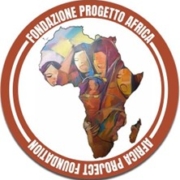Rediscovering ancestors: the African mask
/in Uncategorized/da RedazioneThe mask has always had a religious and symbolic value in human cultures, it is an important tool whose use has been attested since the Paleolithic, in the cave paintings of the Sahara, in ritual and magical functions. A widespread use is certainly the theatrical one, the mask is the main object of the performances, once worn the actor “doubles”, assuming another identity. The duality of the mask is not a feature limited to theatrical representation but is fundamental in many cultures of Africa. It should be remembered that Africa preserves what are the most ancient art forms ever found, from the already mentioned rock paintings to sculptures. The mask is one of the many forms with which different African populations express themselves, connecting not only to the world around them, but also to their ancestors. It is necessary to specify that the concept of “art” in Africa does not exist, at least not as we understand it in the West. A work, be it a mask or a sculpture, does not want to express the individuality of an artist, but fundamental messages and concepts for the whole population (motherhood, fertility and veneration of ancestors are among the most represented themes). For this reason, often masks and sculptures do not bear the “name” of a precise artist, being instead collective productions.

This means that the mask does not want to have an aesthetic value, their function is not to be admired as “works of art”, are instead important tools for the social balance of the group, are a real medium between the world of the living and the dead. Wearing a mask means assuming the identity of one’s own ancestor or a spirit of traditional belief (for this reason many masks have zoomorphic shapes).
The masks are used to demand a good harvest from the gods, in agricultural rituals, or in public ceremonies in the investiture rites of the tribal leaders. The aesthetic features are quite homogeneous, even if there are more types of masks: the faces are very marked, the face is always facing forward, the eyes are deep (often cracks) and the expression is fixed because it must refer to a spiritual possession. The materials used are always of natural origin: clay, wood, fabric or leather, instead for the colors are used vegetable fibers or charcoal. The faces, characterized by broken lines and geometric shapes, represent the lives of the ancestors, characterized by obstacles and difficulties. The masks that represent the spirits become even more different and abstract, with extremely elongated faces, far from any form of realism. In this way the bond with the spirits and, in turn, with the surrounding nature is underlined even more: mountains, storms and other natural phenomena are personified in gods in many African cultures.

To conclude, it is important to understand the importance of African masks in the history of Western art: exhibited in the first European exhibitions, they inspired artists such as Picasso and Modigliani, who took their forms in their paintings and sculptures. Take for example the cubist painting “Les demoiselles d’Avignon” made by Picasso in 1907: the faces of women have geometric shapes, different, noses are elongated, and the eyes are small slits, just like the faces of African masks. For many years the African arts have been belittled, especially during evolutionism (between ‘700 and ‘800), fortunately with the arrival of the avant-garde (in ‘900) the situation has gradually improved, until today, where African art has regained its dignity and a great interest internationally. Today in Italy there are many museums that host collections from Africa and, more generally, from the East. It must be specified that (especially in the nineteenth century) there were many Italian travellers who discovered Asia and Africa, collecting and buying works of art.
For those interested in seeing African and Eastern art live, the following museums are worth mentioning: the MUDEC in Milan, the MAO museum in Turin, the African Museum in Verona, the Museum of Art and Science in Milan, the African Museum in Rome and the very important Museum of Anthropology and Ethnology in Florence.
ARTICOLO REALIZZATO DA: Giulia Arcoraci




